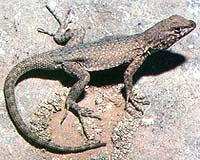| . |  |
. |
Washington DC (SPX) May 18, 2010 Researchers have found evidence that "marine snow"--aggregates of organic material floating in water bodies--may act as microscopic, island-like refuges for pathogens, or disease-causing organisms. This detritus may skew water sampling procedures and mathematical models used to predict the transmission of waterborne diseases to humans. The scientists responsible for these findings, funded by a National Science Foundation (NSF)-National Institutes of Health (NIH) Ecology of Infectious Diseases (EID) grant, published their results this week in the journal ISLANDS OF GERMS: RESEARCHERS DISCOVER PATHOGENS FLOATING ON TINY. The findings are the first to compare the existence of pathogens on marine snow with the way insects, amphibians and other creatures establish homes and persist on remote islands in the oceans. Theories in island biogeography--the study of the factors that affect species richness on islands--also apply to microscopic drifting aggregates, according to Maille Lyons, a scientist at Old Dominion University (ODU) and lead author of the paper, with ODU co-authors Fred Dobbs and Holly Gaff. Other authors are J. Evan Ward of the University of Connecticut; Randall Hicks of the University of Minnesota, Duluth; and John Drake of the University of Georgia. "These predictions help explain whether and for how long bacteria can thrive on an individual aggregate," said Lyons, "and the relationship between the size of the aggregate and the diversity of species found on it." "This study shows that theory developed for the 'macroscopic' world applies equally to the microscopic one," said Sam Scheiner, program director in NSF's Division of Environmental Biology, which co-funds the EID program with NSF's Directorate for Geosciences. "It allows scientists to link the small to the large," said Scheiner, "and to provide predictive tools for understanding disease transmission." Aggregates are made up of small bits of detritus and other components--some of which are living organisms--that usually aren't visible to the naked eye. When these tiny components come in contact with each other, they clump together. The scientists are evaluating the degree to which detritus-based organic aggregates provide a favorable microclimate for aquatic pathogens. These "refuges" seem to protect pathogens from stressors such as sunlight and salinity changes, and from predators. They also may provide sources of nourishment for the pathogens. "If the microclimate is favorable, aggregates likely facilitate the persistence, prevalence and dispersal of aquatic pathogens," said Dobbs. The researchers found an increased metabolic response, and diversity of bacteria, on individual organic aggregates compared to the surrounding water, indicating that aggregates may be potential reservoirs and vectors for aquatic pathogens. Current models of the transmission of waterborne diseases and illnesses, however, don't consider the benefits microorganisms gain from hitching a ride on marine snow. "We've shown, for example, that vibrios [a type of pathogen] proliferate in aggregates and decline in adjacent, aggregate-free water," the journal paper states. When water sampling is conducted--to determine whether recreational waters should be open to swimmers, or whether shellfish beds should be closed to fishers--aggregates lend a hit-or-miss aspect to the testing. A sample might include only water without aggregates, giving false-negative results that no danger exists. "The presence or absence of a single aggregate in an environmental water sample," said Dobbs, "could drastically alter the measure of bacterial concentrations."
Share This Article With Planet Earth
Related Links National Science Foundation Darwin Today At TerraDaily.com
 Bahamas Islands Used To Test Survival Of The Fittest
Bahamas Islands Used To Test Survival Of The FittestHanover NH (SPX) May 18, 2010 By using entire islands as experimental laboratories, two Dartmouth biologists have performed one of the largest manipulations of natural selection ever conducted in a wild animal population. Their results, published online by the journal Nature, show that competition among lizards is more important than predation by birds and snakes when it comes to survival of the fittest lizard. "When T ... read more |
|
| The content herein, unless otherwise known to be public domain, are Copyright 1995-2010 - SpaceDaily. AFP and UPI Wire Stories are copyright Agence France-Presse and United Press International. ESA Portal Reports are copyright European Space Agency. All NASA sourced material is public domain. Additional copyrights may apply in whole or part to other bona fide parties. Advertising does not imply endorsement,agreement or approval of any opinions, statements or information provided by SpaceDaily on any Web page published or hosted by SpaceDaily. Privacy Statement |